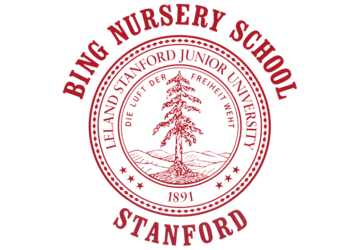
By Jess Goodman, Teacher
Waldkindergarten, skogsmulle, bush kinder, forest school: all terms that describe early childhood learning environments that occur primarily or exclusively in nature. In such settings, trees, birds, streams, leaves, mud and rain serve as the curriculum that guides and dictates children’s explorations.
While Bing does not define itself explicitly as such a school, we are privileged to have expansive outdoor spaces where naturalistic basic materials such as sand, seed pods and sticks become the tools of children’s play. Therefore, teachers benefit from gaining their own sense of how forest schools operate and how children flourish in these settings. Conveniently for Bing teachers, in 2019 the Children Learning with Nature Institute—featuring prominent advocates of nature pedagogy from across the world—took place in California. Hosted just outside scenic Yosemite Valley, this three-day conference was a convergence of educators committed to developing their understanding of nature-based learning spaces for children. Teachers Kelli Agnich, Betsy Koning and I represented Bing.
One notable presenter was Kate Hookham of Auchlone Nature Kindergarten in Scotland. Hookham spoke about their school, where the children spend the majority of their time outdoors, and she facilitated a workshop on tool usage and risk assessment when working with children. Participants, including the Bing teachers, practiced safe shoveling, whittling and rope-tying techniques, empowering us with a sense of fulfillment and resourcefulness. Similarly gratifying, there was a hands-on session on safe fire practice with elementary-age children, presented by Amy Butler from North Branch Nature Center in Vermont. In a small group, we gathered dry grass and branches for kindling and larger dead branches for a more sustained burn, just as Butler’s elementary classes do year-round. Using a Swedish fire starter (Light My Fire’s FireSteel 2.0 Scout, which I highly recommend), we achieved a modest fire over which we could boil water for tea in a lovely cooking vessel called a Kelly Kettle. Butler’s communal fire-making experience and Hookham’s tool workshop reinforced our own commitments at Bing—to honor children as capable, competent, and worthy of responsibility and appropriate risk.
Max Christie and Ben Clark of Northland Childspace in New Zealand were sages throughout their sessions on nature-inspired art, music and storytelling. In their session on storytelling, they modeled an open-ended, rhythmic storytelling style based on origin stories of New Zealand’s Maori people. Impressively, New Zealand has a unique national early-childhood curriculum called Te Whariki, which combines a play-based foundation with the indigenous beliefs of the Maori people. The curriculum requires a commitment to understanding the Maori culture and preserving the Maori language. Consequently, Childspace offers a child-centered experience with a deep exposure to nature that honors the local history and beliefs of the Maori. Te Whariki beautifully amplifies the spiritual connection with their land.
At the end of this training program, I felt inspired by the other educators and the school settings dedicated to ensuring opportunities for children to be in nature. I left contemplating how these forest schools could influence Bing’s environment and philosophy. More importantly, I left with questions: How can we continue to honor children at Bing by providing them with the challenges and risks of working with tools? How can we honor our own local origin stories and recognize the Ohlone history and connection to our own area? How are we as teachers showing children that we value their engagement with our outdoor spaces?
As the naturalist John Burroughs once said, “I go to nature to be soothed and healed and to have my senses put in tune once more.” I was thankful for the restorative nature of this unique conference as well as the global perspectives of its presenters. I am excited about the new directions the experience has pointed me toward.